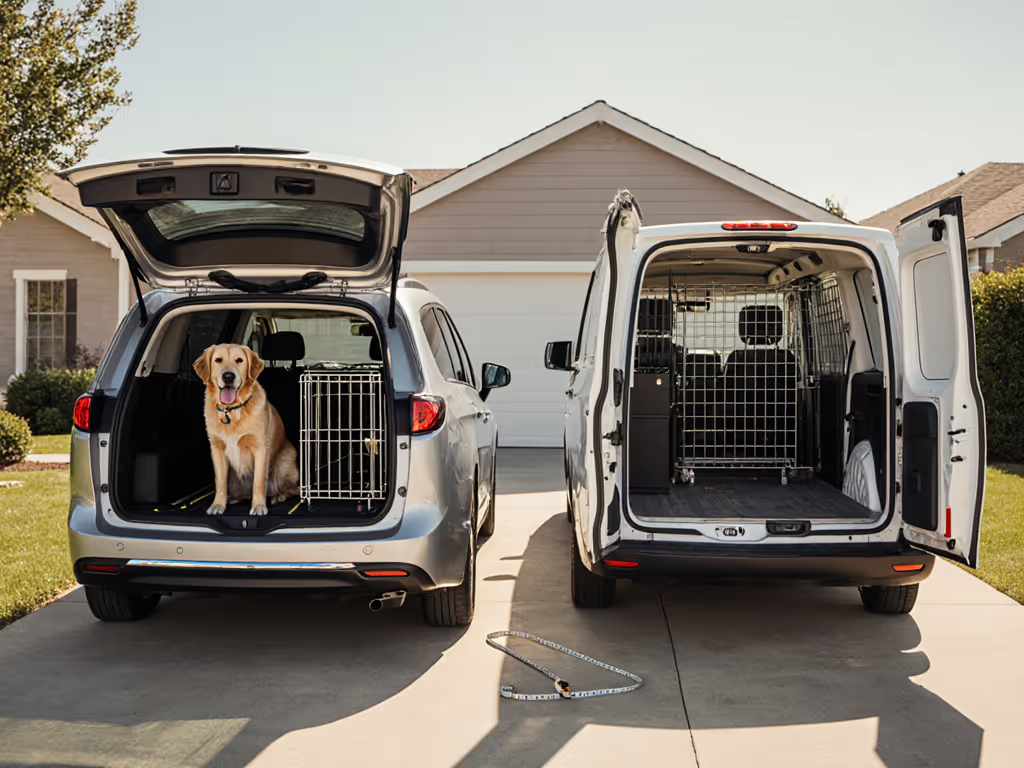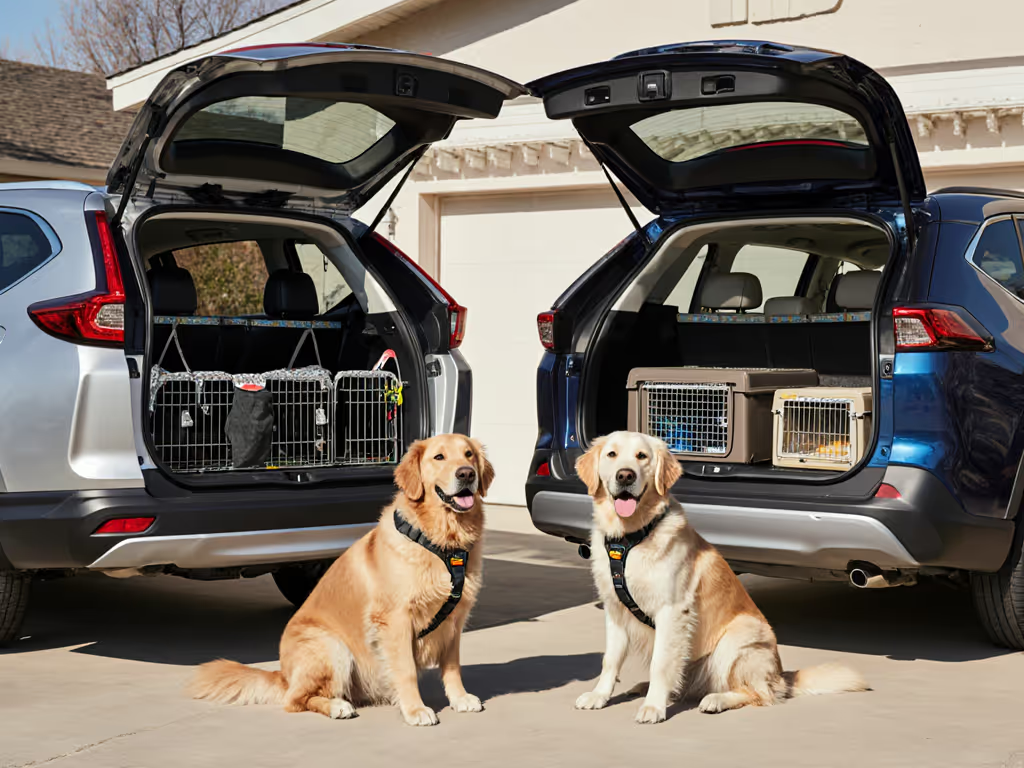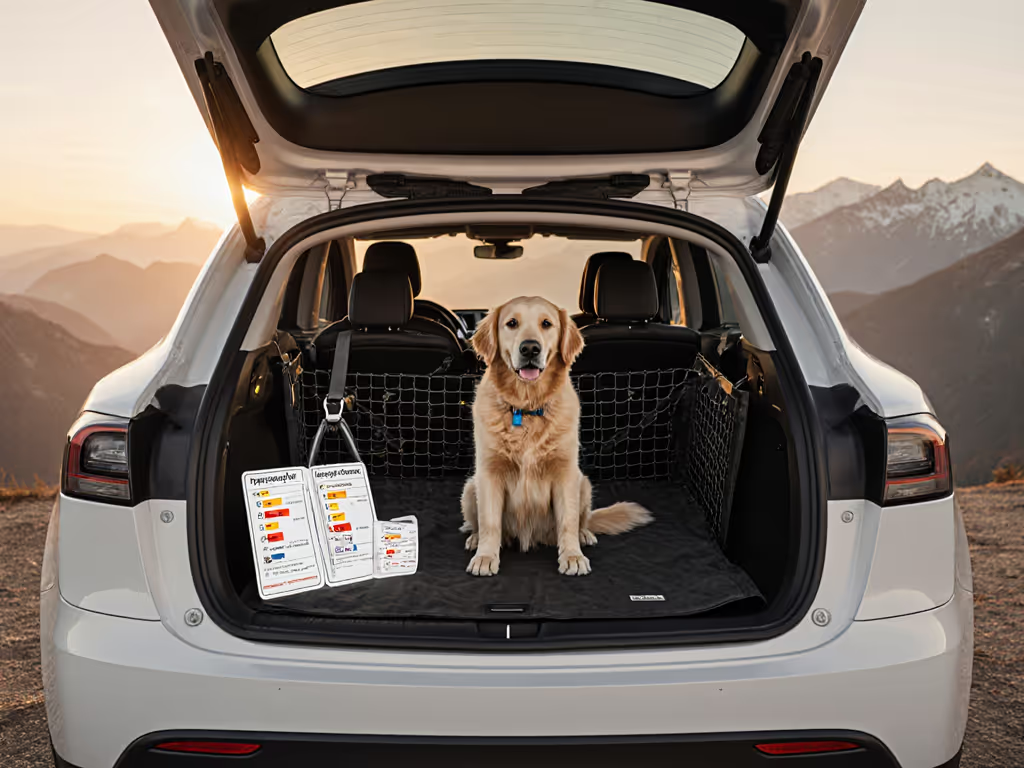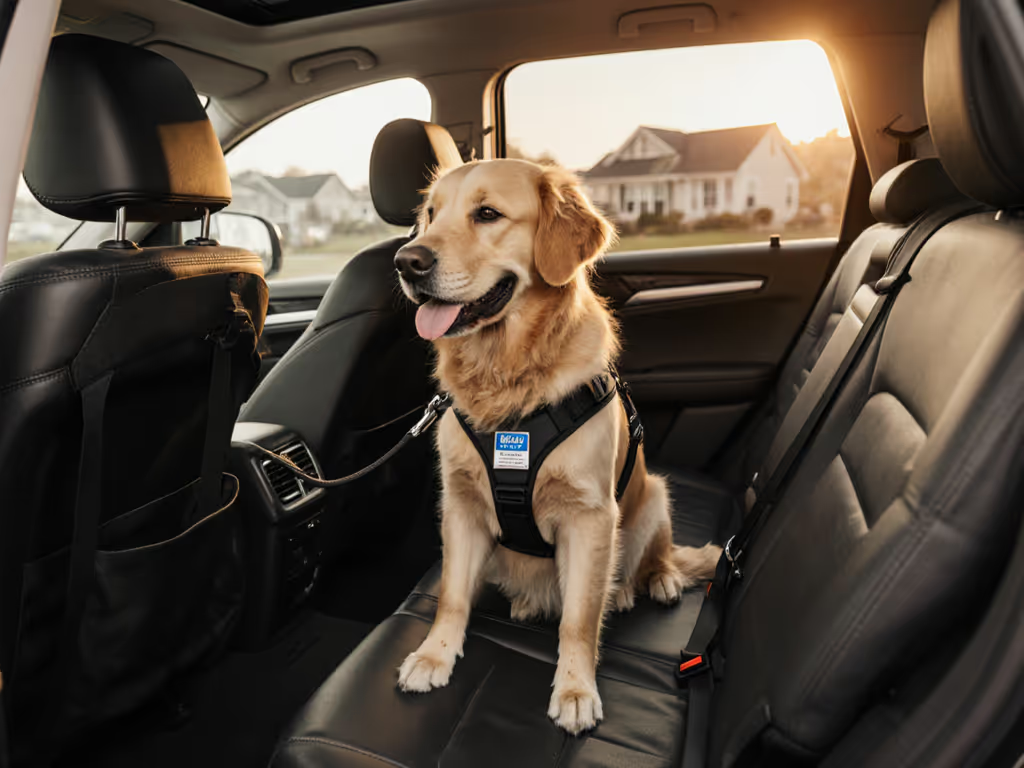
Soft vs Hard Dog Crates: Calm & Safe Car Travel Guide
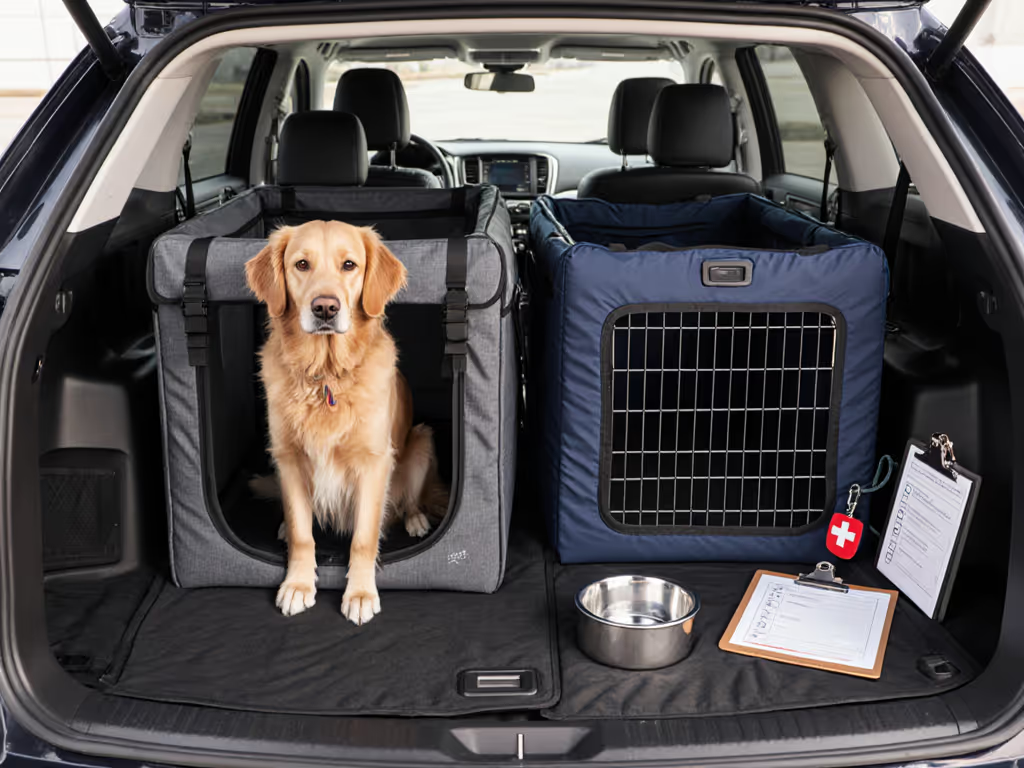
When weighing soft crate vs hard crate options for your next road trip, the stakes extend far beyond portability. Choosing among the best dog crates for travel requires balancing safety certifications, noise management, and behavioral compatibility, all factors that determine whether your dog arrives relaxed or rattled. In vehicle environments, containment isn't just about preventing distraction; it's about creating a predictable microclimate where your dog's nervous system can downshift from fight-or-flight to rest-and-digest. Let's examine why this distinction matters more than you might think.
Why Crate Choice Transcends Convenience
Most pet owners initially focus on dimensions and weight when shopping for travel solutions. Yet in moving vehicles, physics transforms seemingly minor choices into critical safety variables. During a 30-mph collision, an unrestrained 50-pound dog becomes a 1,500-pound projectile. Even moderate braking at highway speeds generates forces exceeding 2G, more than enough to collapse mesh panels or shift lightweight containers. This isn't hypothetical: crash test data from the Center for Pet Safety reveals that 90% of "universal" soft crates fail structural integrity at impacts below 35 mph.
Comfort and predictability are safety multipliers; a calm dog makes every restraint work better.
Beyond crash physics, cabin acoustics profoundly impact canine stress levels. Vehicles amplify road noise by 15-20 decibels inside the cabin compared to outside measurements. Dogs hear frequencies up to 45 kHz (nearly double human range), which means they experience tire roar and engine harmonics as deafening white noise. This sensory overload triggers panic responses that compromise even properly secured setups. Noise-indexed solutions matter as much as structural ones.
The Soft Crate Conundrum: Portability vs Protection
Soft-sided carriers excel in train stations and hotel rooms where portability reigns supreme. Their lightweight construction (often under 5 lbs) and fold-flat design make them ideal for brief stints at airports or veterinary waiting areas. However, these same attributes become liabilities in vehicles:
- Structural vulnerability: Polypropylene frames and polyester mesh panels lack rigidity to withstand collision forces. Testing shows most soft crates deform at impacts equivalent to 15-20 mph collisions, common speeds in urban fender benders.
- Acoustic amplification: Thin fabrics transmit rather than absorb road vibration. Dogs inside hear every gear shift and lane change amplified through resonant cavities.
- Behavioral complications: Mesh walls provide visual access that increases reactivity to passing traffic. Many dogs develop cage-kicking habits from attempting to "chase" stimuli.
I recall a shepherd mix who trembled through every lane change, a reaction worsened by her mesh-sided carrier. The constant visual input kept her in high alert, her breathing shallow and rapid. When we switched to an enclosed solution, her anxiety decreased before we even started the engine.
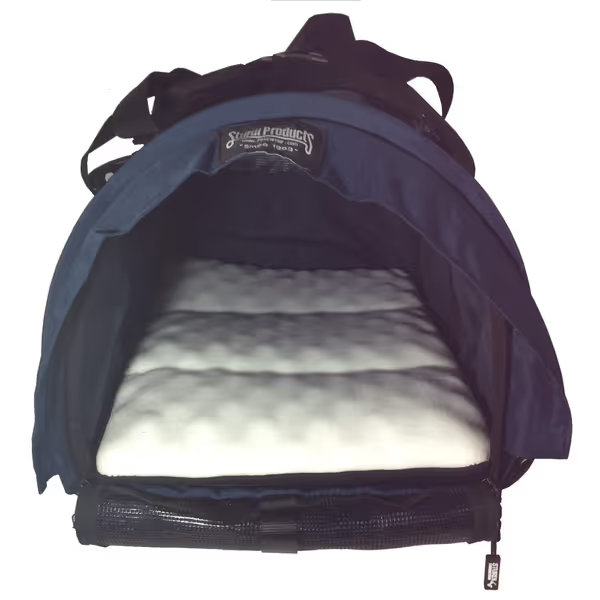
SturdiBag Large Pet Travel Carrier
While the SturdiBag Large Pet Travel Carrier offers flexible height options for airline travel, its soft construction makes it unsuitable as a primary vehicle solution. These carriers work best for final-leg transitions (like walking from parking garage to vet clinic), where brief, controlled exposure to stimuli is manageable. Never position them loose on seats; secure them with seatbelts using the provided straps to minimize movement, though this doesn't address the core structural limitations.
Hard Crates: The Calm Containment Standard
Rigid crates create what behavioral scientists call "acoustic shadow zones," protected spaces where ambient noise drops 8-12 dB compared to open cabin areas. This isn't merely about quiet; reduced sound pressure allows dogs to process their environment without sensory overload. Consider these evidence-based advantages:
Structural Integrity Matters
Only crates meeting FMVSS 213 (Federal Motor Vehicle Safety Standard) or equivalent crash testing provide meaningful protection. The Gunner G1 Kennel remains the sole brand to pass Center for Pet Safety's rigorous 2015 evaluation, surviving 35-mph frontal impacts with minimal deformation. Their rotational molding technique creates seamless walls that distribute impact forces across the entire structure rather than concentrating stress at connection points. Compare this to wire crates where individual weld points become failure zones under dynamic loads.
Behavioral Benefits of Enclosure
Solid walls serve dual purposes: they block visual triggers that provoke reactivity while creating den-like predictability. Dogs naturally seek enclosed spaces during stress, their evolutionary "freeze" response activates only when escape routes feel limited. This explains why many anxious dogs settle faster in fully enclosed crates versus wire or mesh alternatives. The key is proper acclimation: I've seen dogs transition from trembling to snoozing within three weeks using gradual light-reduction techniques.
Strategic Ventilation Design
Quality hard crates balance airflow with noise reduction through engineered louver systems. Look for models with horizontal vents positioned below a dog's seated height, which prevents wind directly hitting ears while maintaining oxygen exchange. The Petmate Sky Kennel exemplifies this principle with 360-degree ventilation that creates cross-breezes without draft channels. For warmer climates, position crates so rear vents align with cabin air conditioning ducts rather than directing airflow straight at your dog.
Making Your Choice: Beyond the Crash Test Label
Selecting the right crate requires matching three variables: vehicle geometry, dog behavior, and trip duration. Here's my vetted decision framework:
Noise Audit: Your Essential First Step
Before measuring your SUV's cargo area, conduct a noise audit. Park your vehicle on a quiet street, then:
- Sit in the driver's seat with windows up
- Note ambient sounds at idle (engine hum, HVAC)
- Drive 15 minutes on varied roads (city streets, highway)
- Record decibel levels using a smartphone app
This reveals your vehicle's acoustic signature. Sedans typically register 65-70 dB at highway speeds, while SUVs approach 75 dB due to greater wind resistance. Match these readings to your dog's noise sensitivity: many working breeds react to sounds above 60 dB. Crates with foam-lined walls (like the Dakota 283) may be necessary for sound-sensitive dogs in louder vehicles.
Fitment Principles That Prevent Panic
Most dog anxiety in vehicles stems from unstable footing and constrained movement during turns. Apply these fitment rules:
- Width: Crate should allow standing/spinning but prevent sideways sliding. Subtract 2 inches from your vehicle's narrowest point (often wheel wells)
- Height: Top should sit below headrest height to avoid obstructing rear visibility
- Depth: Allow 1.5x your dog's nose-to-rump length for stretching
- Anchoring: Must connect to LATCH anchors or cargo tie-downs (never rely on seatbelt loops alone)
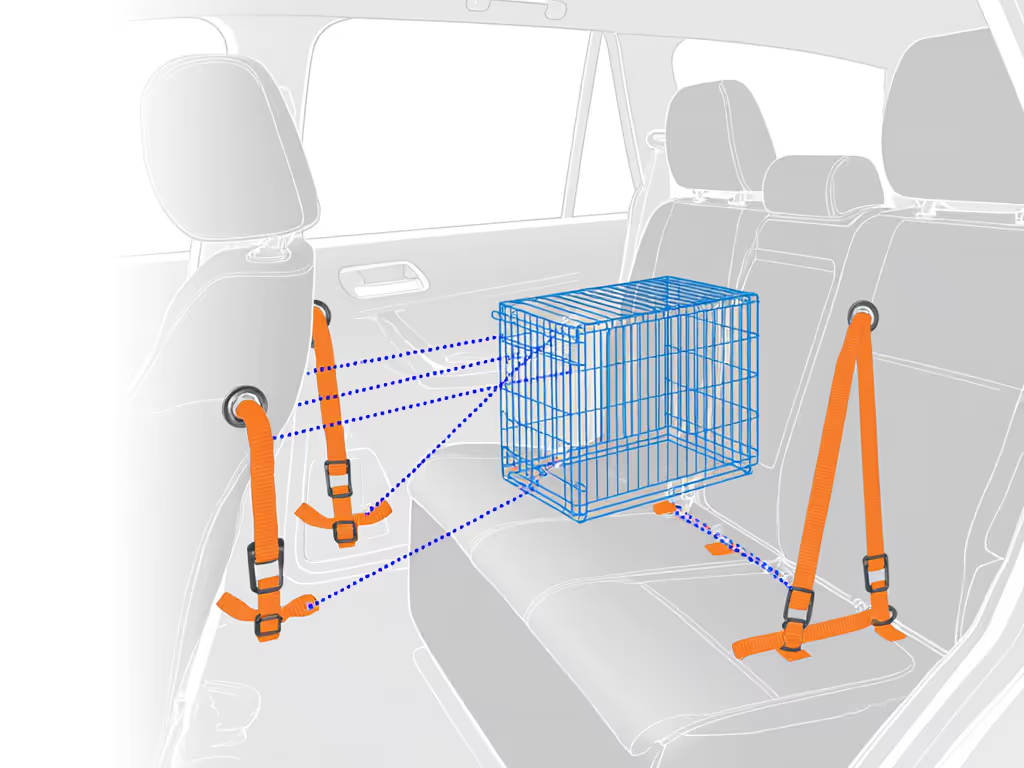
Acclimation Protocol for Reluctant Travelers
A perfectly fitted crate remains useless without proper conditioning. Adapt this 14-day protocol:
- Days 1-3: Place crate in living area with favorite blanket. Toss treats inside while dog is outside crate
- Days 4-7: Close door for 15-30 seconds during treat delivery. Gradually increase duration
- Days 8-10: Add crate to stationary vehicle. Operate engine while dog eats inside
- Days 11-14: Take 5-minute drives with crate secured. Reward calm breathing
Never force entry or skip steps, this builds negative associations. The shepherd mix I mentioned earlier mastered this protocol through incremental exposure, her breathing slowing before we even started the engine by week three.
The Verdict: Safety Through Predictability
When comparing best dog crates for car travel, hard-sided models consistently outperform soft alternatives in both safety metrics and behavioral outcomes. Crash-tested plastic crates like the Gunner Kennel or Petmate Sky Kennel provide the structural integrity needed for collision protection while creating the acoustic stability that helps dogs relax. Wire crates (like the Midwest iCrate) offer moderate ventilation but transmit more vibration. Reserve these for short trips with calm, experienced travelers.
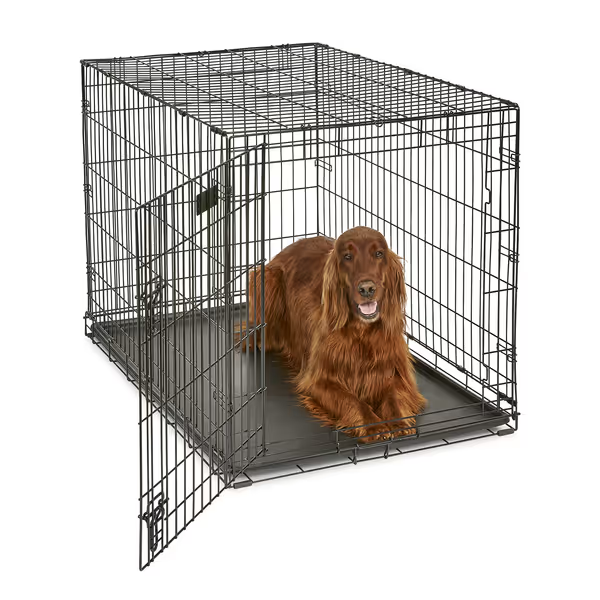
MidWest iCrate Folding Dog Crate
Most importantly, recognize that crate safety extends beyond hardware: consistent routines build the psychological predictability that transforms travel from trauma to tranquility. Quiet cabin, steady dog, safer choices start to stick. Prioritize solutions that address both physical containment and sensory management, your dog's nervous system will thank you at every mile marker.
Further Exploration
Ready to dive deeper into vehicle-specific setups? Check our companion guide: Matching Crate Dimensions to Your 2020-2025 SUV Model. We've compiled verified fitment data for 47 popular vehicles, including exact measurements for navigating tricky features like sloped hatchbacks and raised cargo floors. Plus discover our noise-reduction toolkit: tested materials for lining crates without compromising ventilation or safety certifications.
Related Articles

